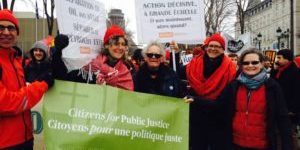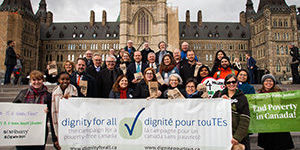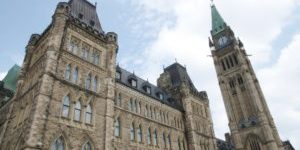Safe Third Country Agreement: FAQ
Current immigration developments in the United States call for a closer look at the place of the Canada-U.S. Safe Third Country Agreement (STCA) in Canada’s refugee policy. The United States’ restrictive executive orders on immigration and deportation raids have raised much concern among immigration and refugee advocates, and fear in refugees and asylum seekers. As immigration tensions rise in the United States, many refugees set their eyes on Canada. Thus, it is important to know what the STCA means for refugees who may seek refuge in Canada from the United States.
What is the Safe Third Country Agreement?
The STCA is a policy brought into force by Canada and the United States in 2004 to regulate refugee mobility between both countries. Under the agreement, Canada and the United States regard each other as safe for refugee claimants. The STCA applies to all refugee claimants seeking entry at land-border crossings or by train, as well as to those travelling through a Canadian airport who have been deported from the United States following a failed refugee claim.
The United States is the only country that Canada has deemed a safe third country. Both governments trust that the other can make fair determinations on each refugee claim received. As such, refugees who claim asylum in the United States cannot do so in Canada (and vice versa) except in certain cases.[1]
Why was the Safe Third Country Agreement instituted?
According to the signatories, the STCA was established to maintain the integrity and efficiency of the asylum and refugee system in Canada and the United States. The government alleges that the agreement insures predictability and a firmer control over asylum cases. The idea is that it would be difficult to regulate cases of border crossing if asylum seekers do not go through the proper routes to file their applications. The government holds that illegal immigration may disadvantage immigrants and refugees who go through the legal, and sometimes arduous, refugee determination process.
Other proponents of the STCA claim that the agreement prevents “queue-jumping” among refugees, especially in this period of heightened uncertainty and fear among refugee communities in the United States The main fear is that some refugee claimants may take advantage of the current political situation to obtain refugee status in Canada. This fear finds its root in the contention over whether refugee claimants can fully justify that their safety will be under threat if sent back to their home country.
Immigration, Refugees and Citizenship Canada (IRCC) does not favour suspending or repealing the STCA. IRCC stated that “the STCA remains an important tool for Canada and the US to work together on the orderly handling of refugee claims.” The government maintains that illegal crossings are prohibited, and the United States still has a fair asylum evaluation system.
Why are people calling on the government to suspend the STCA?
Since it came into effect in 2004, the STCA has faced many legal challenges. In 2006, Amnesty International, the Canadian Council for Refugees, and the Canadian Council of Churches challenged the designation of the United States as a safe country for refugees. The case suffered a setback when the Supreme Court declined to hear it, claiming there was a lack of substantial evidence of the STCA’s adverse impact on asylum seekers.
In February 2017, about 22 Canadian law schools began compiling information to be used to challenge the STCA in court again. Many refugee advocates hope that with more substantial evidence of the STCA’s impact on refugee claimants, the chances of a legal victory will be higher than in 2006.
Citizens for Public Justice, Amnesty International, The Quebec Association of International Lawyers, and the BC Civil Liberties Association are among many organizations that have called on the government to revisit the place of the STCA in Canada’s refugee program.
Refugee advocates in Canada call for the suspension or revocation of the STCA because they fear the United States may no longer be safe for refugees. They argue that the United States government’s recent restrictive executive orders on immigration and refugees are enough reason to suggest that the country may be unsafe for refugees. One executive order, (which many critics viewed as constituting a travel ban), placed a 120-day suspension on all refugee applications.
Although the Canadian government notes that the United States still meets all criteria for the STCA (e.g. a good human rights record), refugee advocates argue that this is more rhetorical than realistic. They raise human rights concerns over the impact of the travel ban on refugees and asylum seekers. The anti-immigration rhetoric the executive order created raised fears over refugees’ human rights and safety. There have been many recorded cases of xenophobia and racism against refugees and migrants who are visible minorities.
Refugee advocates are very concerned that the STCA does not allow asylum seekers who may choose to find refuge in Canada access to needed supports. This is troubling, especially in a country many consider to be welcoming and hospitable.
Why has there been a rise in the number of people crossing into Canada?
Individuals flee the United States for a number of reasons. Most recently, certain policy changes and anti-immigration sentiments have caused select groups to feel that their lives could be at risk if they remain in the United States. For some, this is a result of a fear of deportation to a country they feel is unsafe, dangers posed by gang or domestic violence, the expiration of resident status, and so on. In particular, the end of select Temporary Protected Status designations, which allowed nationals from certain countries to reside in the United States, has prompted thousands to seek safety in Canada.
Due to the terms of the STCA, in order for most individuals fleeing the United States to be considered for refugee status in Canada they must enter outside an official port of entry. By doing so, these individuals can begin the refugee claim process, whereas if they arrived via regular channels, they would be automatically returned to the United States. If the STCA were to be revoked, individuals would have the opportunity to make their refugee claims at official border points in an orderly manner and avoid the risks associated with unofficial crossings.
It is important to note that most refugees seek asylum from their country of origin, not from the U.S., but simply arrive via the U.S.
Is it illegal to cross into Canada at an unofficial border point?
Under Canadian and International refugee law, an individual in search of protection may bypass borders in order to seek asylum. The 1951 UN Refugee Convention, along with Canada’s Immigration and Refugee Protection Act, state that refugees attempting to enter Canada and gain protection must not be penalized in the process.
While some politicians and journalists have continually referred to this process as “illegal,” when an individual has a well-founded fear of persecution, this movement is not, in fact, illegal, but is better referred to as “irregular”.
Do irregular border crossers slow down the resettlement process for other refugees?
Canada has two primary streams for granting refugee protections: the Refugee and Humanitarian Resettlement Program and the In-Canada Asylum Program. Those who arrive as Government-Assisted Refugees, Privately-Sponsored Refugees, or Blended-Visa Office Referred Refugees are identified for resettlement by the UNHCR and/or private sponsors and are processed through the former stream.Those who make claims from within Canada or upon arrival go through the latter channel.
Individuals that make land-based claims notify an Immigration or Border Services Officer of their situation, which then initiates the process of being considered for refugee protection by the Immigration and Refugee Board (IRB). This process occurs without any direct impact on resettled refugees, though all parts of the system are currently facing lengthy wait times.
What is CPJ’s stance on the STCA?
CPJ has long believed that the Safe Third Country Agreement conflicts with Canada’s position on non-discrimination and equality. It does not give asylum seekers the opportunity for a fair hearing on their cases in Canada.
Canada and the United States do not share the same principles on the determination of asylum cases. Although they are not covered under the Convention Relating to the Status of Refugees, asylum seekers who are victims of gender-based violence are more likely to receive a fair hearing in Canada than in the United States.
Refugee claimants who arrive in Canada from the United States are denied a hearing at the border, because the STCA is very restrictive on the kinds of cases that can be assessed once one is denied by the United States.
CPJ also believes the United States’ immigration policy discriminates against refugees on a religious and national identity basis. In short, Canada can no longer rely on the United States to provide refugee claimants with a fair hearing on their asylum cases. CPJ has written to the Minister of Immigration, Refugees, and Citizenship, asking him to revoke the STCA.
How can you respond to the STCA?
Read CPJ’s latest report, Reclaiming Protection, to explore some key tools to advocate for an end to the STCA.
Photo Credit: Flickr/walterw.a




